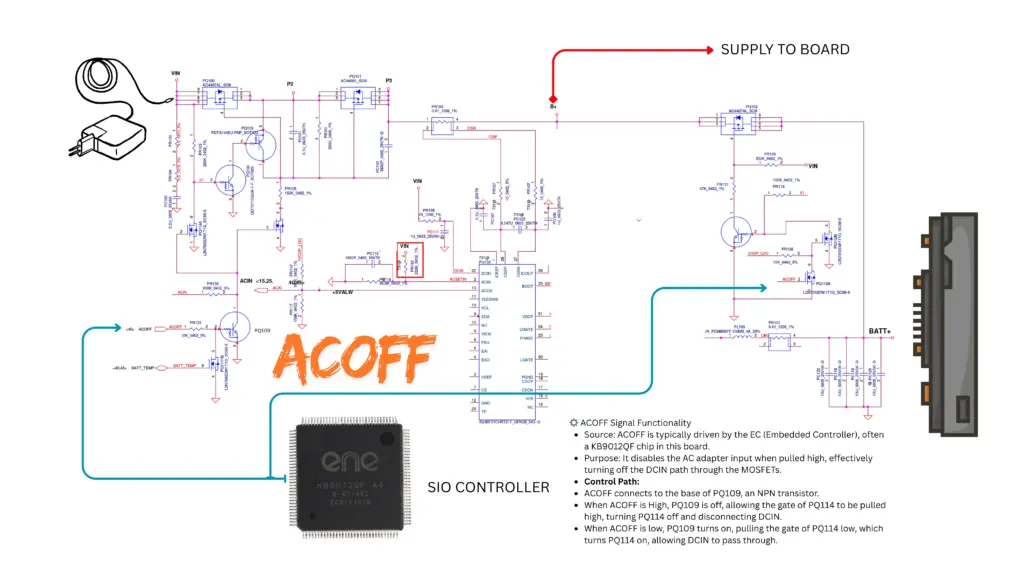ACOFF SIGNAL – HOW IT WORKS

The ACOFF signal on the Dell LA-9104P motherboard plays a crucial role in AC adapter detection and power gating, particularly in controlling the PQ114/PQ109 MOSFET pair that manages the DCIN path. Here’s a breakdown of how it works:
⚙️ ACOFF Signal Functionality
- Source: ACOFF is typically driven by the EC (Embedded Controller), often a KB9012QF chip in this board.
- Purpose: It disables the AC adapter input when pulled low, effectively turning off the DCIN path through the MOSFETs.
- Control Path:
- ACOFF connects to the base of PQ109, an NPN transistor.
- When ACOFF is high, PQ109 is off, allowing the gate of PQ114 to be pulled high, turning PQ114 off and disconnecting DCIN.
- When ACOFF is low, PQ109 turns on, pulling the gate of PQ114 low, which turns PQ114 on, allowing DCIN to pass through.
🔍 Diagnostic Notes from LA-9104P Cases
- If ACOFF = 0V, PQ109 may not be conducting, and PQ114 gate could be floating or pulled high, blocking DCIN.
- If PQ109 is shorted or the collector resistor (PR139) is open, the gate of PQ114 may not be pulled low even if ACOFF is low.
- ACIN voltage (from the charger IC) must be above a threshold (typically ~3.2V) for ACOK to go high and allow proper ACOFF behavior.
🧪 Troubleshooting Tips
- Check voltage at pin 27 of KB9012QF (ACOFF output).
- Verify PQ109 base/emitter voltages and whether it’s switching properly.
- Confirm PQ114 gate voltage—should be low when ACOFF is active.
- Inspect PR139 and related resistors for correct values and continuity.
- Measure ACIN and ACOK from the charger IC (PU100) to ensure proper adapter detection.






Responses